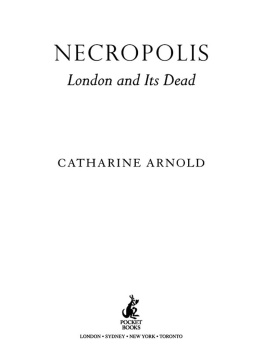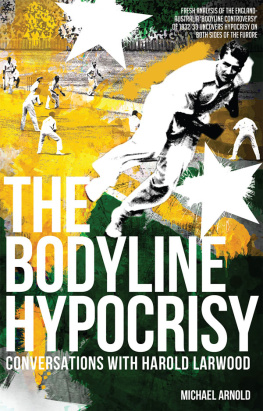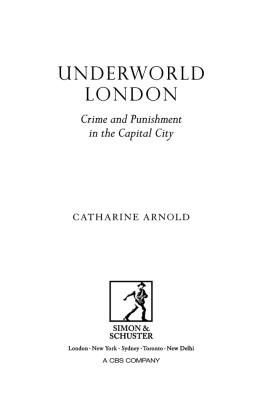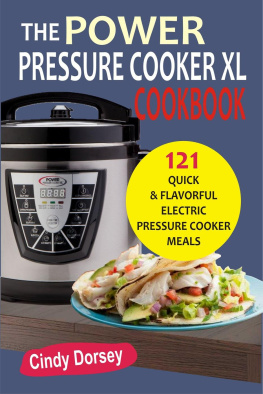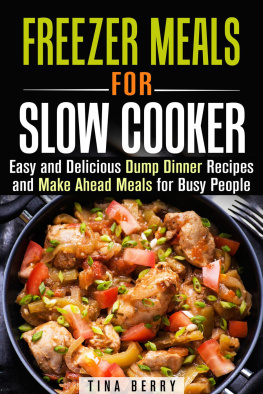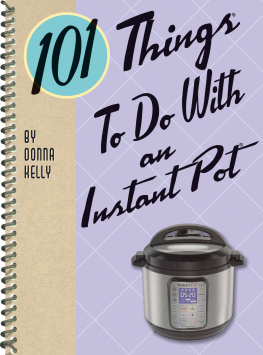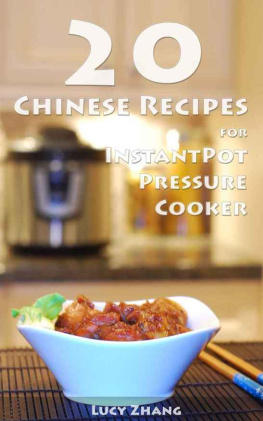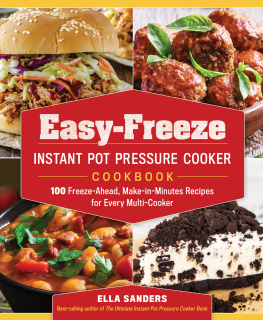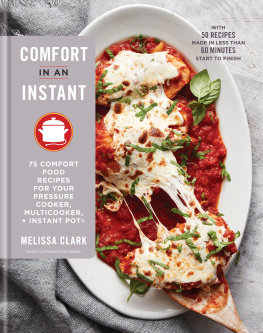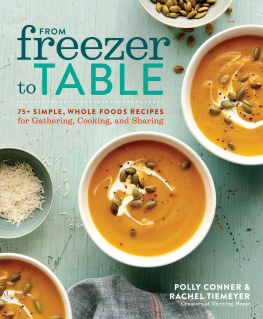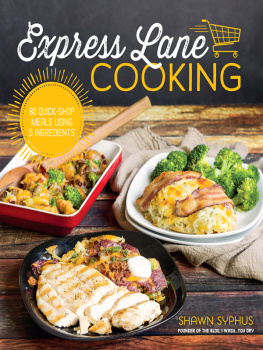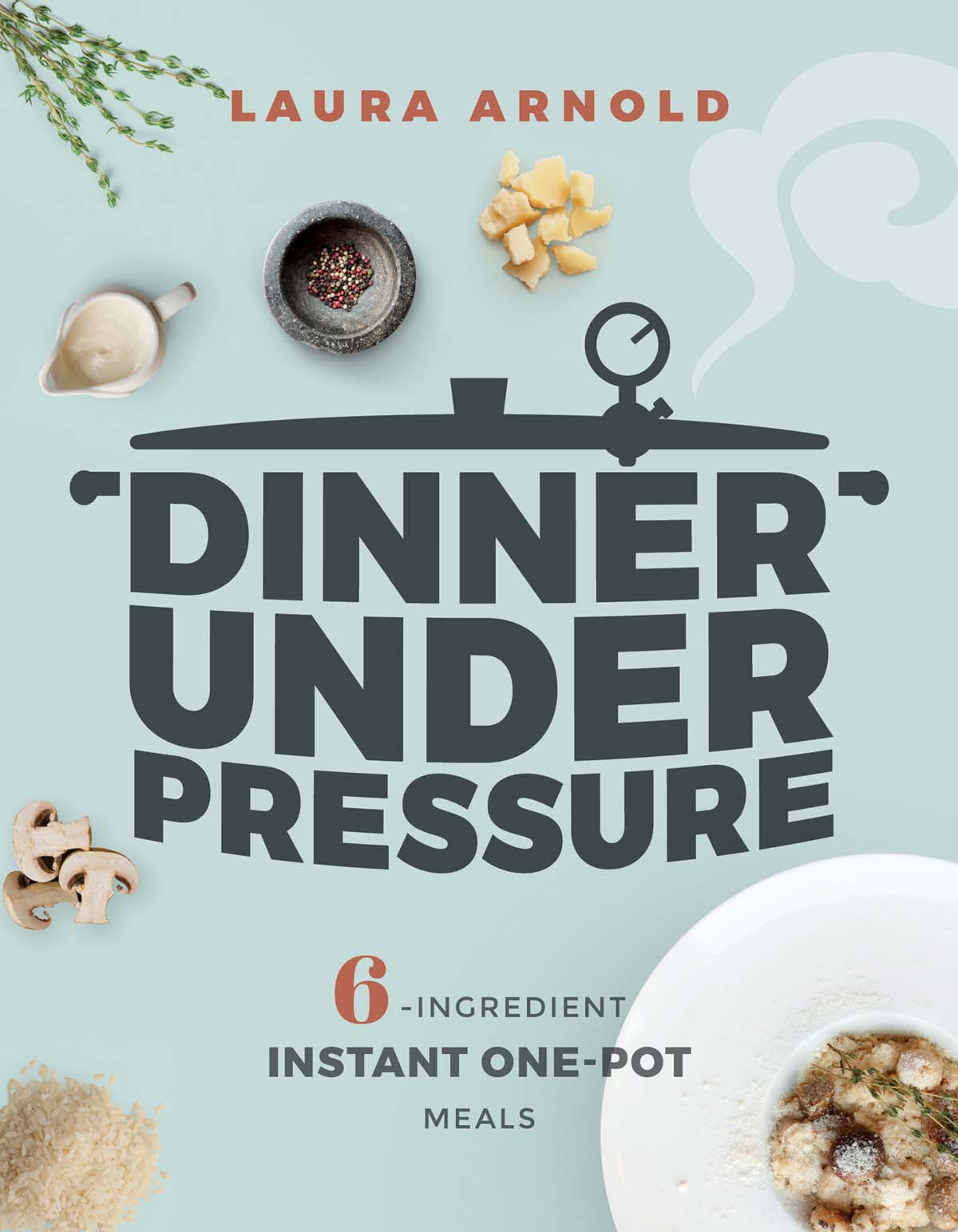Contents
Guide
Page List
ALSO BY LAURA ARNOLD:

INSTANT ONE-POT MEALS
BEST SIMPLE SUPPERS FOR TWO
BEST SWEETS & TREATS FOR TWO
If you are going to follow links, please bookmark your page before linking.
CONTENTS
Getting dinner on the table can seem like a daunting task. Not only do you have to shop for the ingredients, but then you have to unload, chop, and finally cook everything, hoping to get a delicious dish after being tired from a long day of work. One-pot meals have changed the dinner game plan, making dinner seamless and easy, especially with only one vessel to clean. The electric pressure cooker has also become a wildly popular device for busy singles, families, and couples alike to be able to cook their favorite recipes in half the time on a busy weeknight, or even for larger groups on the weekend, stress-free and hands-free. The only problem with one-pot recipes and pressure-cooking recipes is that, oftentimes, it feels like there are so many ingredients and steps just to get an easy meal finished quickly on a weeknight.
Dinner Under Pressure was created with the mind-set of the busy individual who wants a delicious, crowd-pleasing dish that satisfies any age group and any number of people in only a matter of minutes. Using just six ingredients (wow!), you can create some of your favorite recipes, such as Classic Meat Loaf, Butternut Squash Risotto, Chicken Carbonara, and Chicken Cordon Bleu, so easily. The key to Dinner Under Pressure is the homemade Spice Mixes & Sauces () that boost any dish to a new flavor level. Use these recipes or store-bought spice blends and sauces for recipe success throughout this book. Also, Dinner Under Pressure likes to utilize fresh or frozen meat, starch, and veggie options throughout the book so you can buy in advance and come home already prepared to cook a delicious meal. When you feel like you are in a dinner pinch, the time-saving recipes and tips throughout Dinner Under Pressure will help you succeed in getting a meal that tastes as delicious as if it took you all day! Forget frozen pizza or Chinese deliverysay yes to making homemade dinners a reality!
TROUBLESHOOTING RECIPES WITH THE PRESSURE COOKER
When using the electric pressure cooker, it is important to understand some key tricks to help you create a successful recipe. Be sure to refer to your manual about the correct way to use the pressure cooker and always face the steam valve away from you! Within this book are a number of recipes, such as casseroles and pastas, that use thicker sauces. With thicker sauces and cream sauces, there is a chance they could possibly burn in the bottom of the pressure cooker. To avoid burning anything in the pressure cooker, it is essential to use the steamer rack as well as a 7-cup heatproof glass baking dish (such as Pyrex), 6- or 7-inch cake pan, or 3-quart smaller pressure cooker insert. Fill the pressure cooker with 1 cup of water and place the steamer rack inside. Place the casserole dish on top of the steamer rack and the steam will allow the casserole to cook perfectly.
Another question often asked with the pressure cooker is how to make sure every recipe will come to pressure correctly. The amount of liquid in a recipe is essential for pressure to be attained. Each recipe needs to have at least to cup of liquid for the pressure cooker to work correctly. In addition, be sure that the steam valve is locked and closed when setting the pressure cooker settings, as an open valve will allow air to come through into the machine and the correct pressure will never be reached.
After a recipe has finished cooking and the pot has been opened, the sauce or ingredients may seem thin or watery. This problem can be solved by returning the pressure cooker to the SAUT setting and bringing the sauce to a simmer. Allow the sauce to simmer until it has thickened and reduced to the desired consistency before serving.
RECIPE TIMING
When setting the cook time for the electric pressure cooker, the machine doesnt begin the pressure cooking immediately. The machine first needs to build enough steam pressure inside the cooking chamber. The time that the machine takes to come to pressure can take anywhere from 10 to 15 minutes, depending on the amount of ingredients and liquid inside the pressure cooker. This will add additional hands-off wait time while you are making any pressure cooker recipe.
Additionally, when the machine is finished cooking, it will beep and the KEEP WARM function will turn on. (Hit the CANCEL button to turn the machine off; oftentimes, the KEEP WARM setting can cause your food to burn.) This is the time in which you can choose either natural release, partial natural release, or quick release. Natural release is when you allow the pressure valve to release by itself without touching the machine; this could take another 15 minutes or so. Partial release, which is often used in this book, is when you allow the machine to naturally release for a certain number of minutes and then you quick release to hasten the process and release the steam valve. Quick release is when you manually release the pressure valve to release all of the steam immediately and remove the lid. The type of release for each recipe is indicated in the method.


When looking at the cooking times in these recipes, the pressure time and active time are the only times indicated. This means that there is an additional 15 to 30 minutes of additional hands-free time in which the machine needs to come to pressure and/or release pressure in a certain way. It is important to understand and note this when recipe planning.
THE KEY IS SPICE MIXES AND SAUCES!
When making recipes that are just six ingredients, oftentimes people worry that the recipes will turn out bland and have no flavor. The key to flavor-boosting recipes is using spices and sauces to add that made-from-scratch touch. The final chapter contains recipes for several homemade spice mixes and sauces that take only a couple of minutes to make. Label and store these spice mixes and sauces to use in delicious recipes throughout this book (I like to make the sauces in big batches and store them in the freezer for easy weeknight prep!). You can also use these sauces and spice mixes in recipes that you dont pressure cook, which serves a double purpose!


